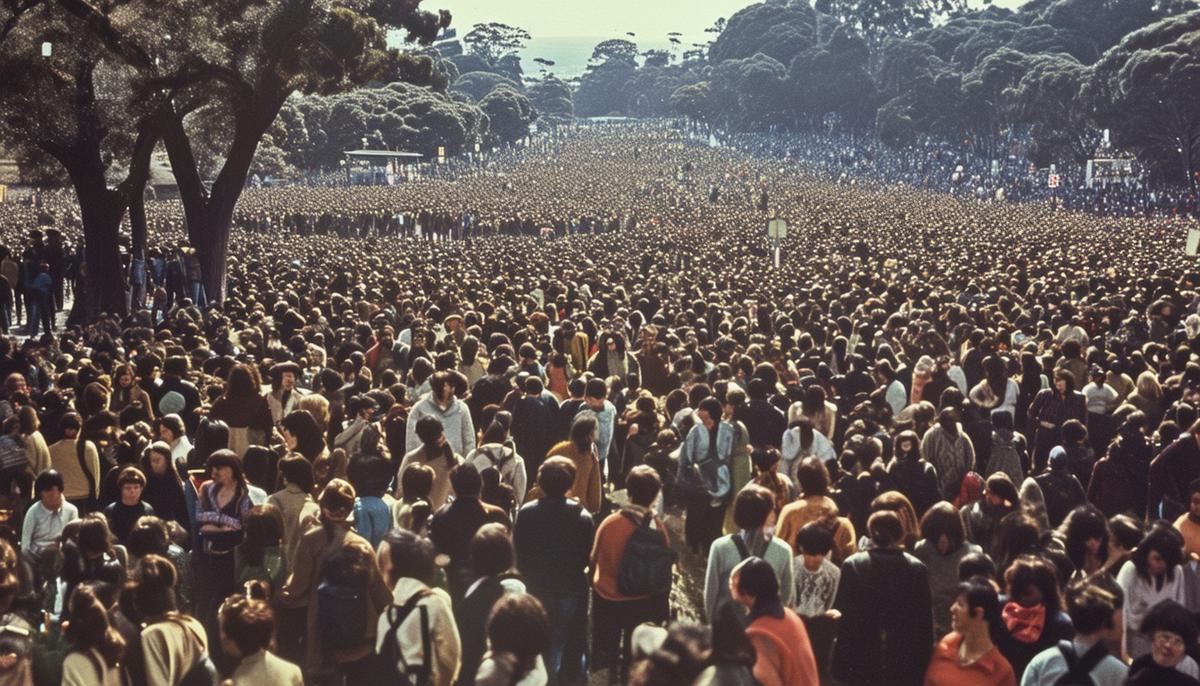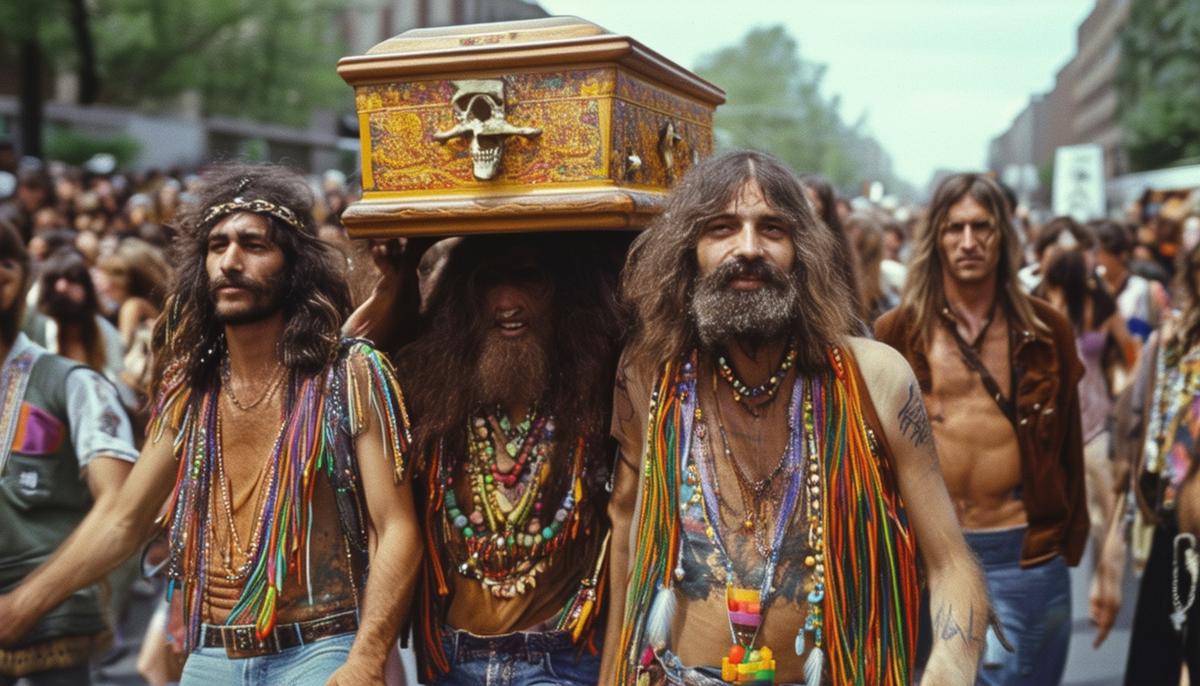Origins of the Summer of Love
The Summer of Love grew from the Beat Generation of the '50s. The Beatniks, with their jazz-inspired poetry and rebellion against post-war norms, laid the groundwork for something big. Folks like Allen Ginsberg and Jack Kerouac championed a lifestyle centered on art, freedom, and introspection.
In the early 1960s, Haight-Ashbury was just a cozy San Francisco neighborhood. As social norms began to shift, hippies rode the wave the Beats started. Artists, musicians, and young dreamers flocked to this vibrant district, attracted by its charm and cheap rents.
The Vietnam War sparked political activism, pushing for civil rights and peace. Music became a rallying cry, with bands like The Grateful Dead turning streets into concert halls. This set the stage for the legendary gatherings that would follow.
The Human Be-In of January 14, 1967 in Golden Gate Park was a turning point. Timothy Leary's famous words, "Turn on, tune in, drop out," echoed beyond San Francisco. This event, drawing more than 20,000 people, set the stage for the Summer of Love, a time of embracing individuality and challenging the establishment.

Key Events and Figures
Bill Graham and Chet Helms were the driving forces behind San Francisco's music scene. Graham managed the Fillmore Auditorium, while Helms had the Avalon Ballroom rocking with his Family Dog Productions. They ensured that all the big names played at their venues.
The Grateful Dead and Jefferson Airplane were the pied pipers of this cultural movement. Their music was the lifeblood of the era, sparking joy and inspiring change.
The Human Be-In amplified this vibe, bringing thousands to Golden Gate Park. Timothy Leary urged the crowd to explore their inner worlds. It wasn't just an event; it was an awakening that echoed far beyond the park.
Musical Highlights:
- Grace Slick from Jefferson Airplane sang about white rabbits and pill-popping adventures
- Jerry Garcia and the Dead jammed on extended grooves
- The Charlatans pioneered the San Francisco Sound
This was more than music—it was a movement, a chance to break free from the status quo.
Cultural Impact and Legacy
The Summer of Love's impact still reverberates today. Its music provided the blueprint for the classic rock era, influencing everything from Woodstock to Coachella. Bands like The Grateful Dead and Jefferson Airplane expanded musical possibilities, laying the foundation for genres like psychedelic rock and new wave.
In fashion, the vibrant, free-spirited styles triggered a shift in how we dress. Flowing skirts, colorful beads, and tie-dye became iconic. Today, echoes of those carefree silhouettes and patterns appear on runways and in clothing stores.
The counterculture pushed against the establishment, advocating for:
- Civil rights
- Environmental awareness
- Gender equality
Their marches, sit-ins, and love-ins ignited conversations about core values that are still relevant today.
The Summer of Love challenged mainstream values, questioning traditional career paths and materialistic pursuits. It introduced communal living and new social structures, encouraging collaboration over competition.
While some hippies eventually returned to traditional paths, a bold spirit of questioning and envisioning alternatives remained. This single summer influenced seismic shifts in society, leaving an unforgettable mark on our collective cultural memory.

Challenges and Decline
As the Summer of Love unfolded, challenges emerged. The media often sensationalized the scene, turning magical moments into caricatures. Haight-Ashbury became a spectacle, and the term 'hippie' was reduced to clichés about peace signs and psychedelic trips.
This led to the "Death of Hippie" event, where participants paraded down the street carrying a coffin filled with symbols of their stereotype. It was an attempt to reclaim their genuine ideals from the media frenzy.
"We wanted to signal that this was the end of it, to stay where you are. Bring the revolution to where you live and don't come here because it's over and done with." – Mary Kasper
Commercialization also posed a challenge. The counterculture ideals of anti-materialism fell prey to capitalism. Peace symbols were mass-produced for profit, and even beloved rock 'n' roll became a money-maker.
As summer wound down, the influx of young dreamers to San Francisco turned their utopia into an overpopulated mess. The infrastructure of communal living proved unsustainable. What began as harmony morphed into a harsh reality of homelessness and limited resources.
By October 1967, things reached a critical point. The "Death of Hippie" event wasn't just a farewell bash—it was a signal for newcomers to stay in their own communities and join the revolution locally. The message was clear: take the spirit home; plant it where you are.

The Summer of Love was a catalyst for change that continues to inspire. Its legacy lives on in music, fashion, and social ideals. This cultural renaissance challenged the status quo and left an indelible mark on society, reminding us of the power of dreaming big and striving for peace.
- Bowen M. The Human Be-In: A Gathering of Tribes for the Summer of Love. San Francisco Oracle. 1967.
- Didion J. Slouching Towards Bethlehem. New York: Farrar, Straus and Giroux; 1968.
- Jassen J. Funeral Notice: Hippie. Berkeley Barb. 1967.
- Penn I. San Francisco Summer of Love. de Young Museum Exhibition Catalog. 2017.
